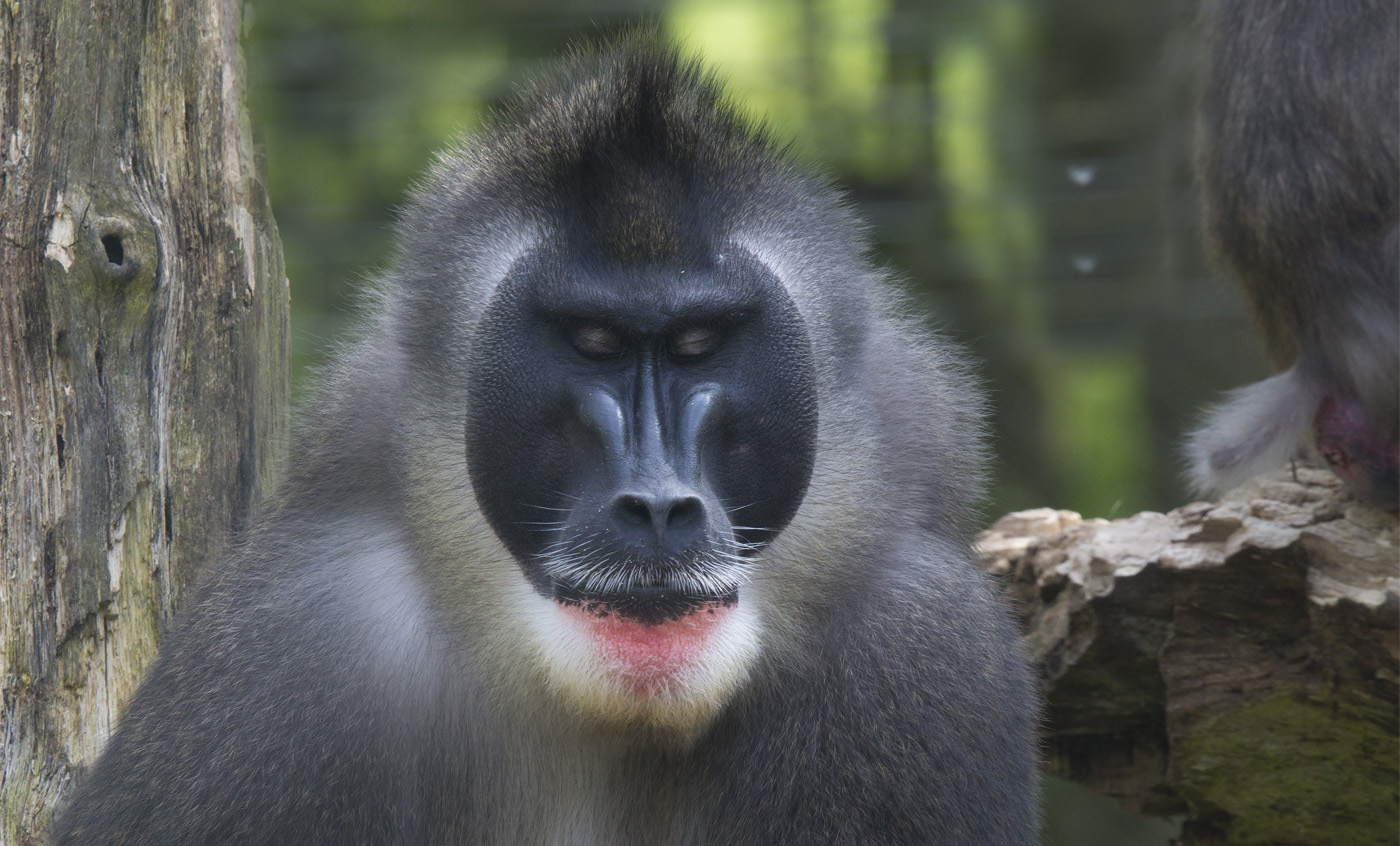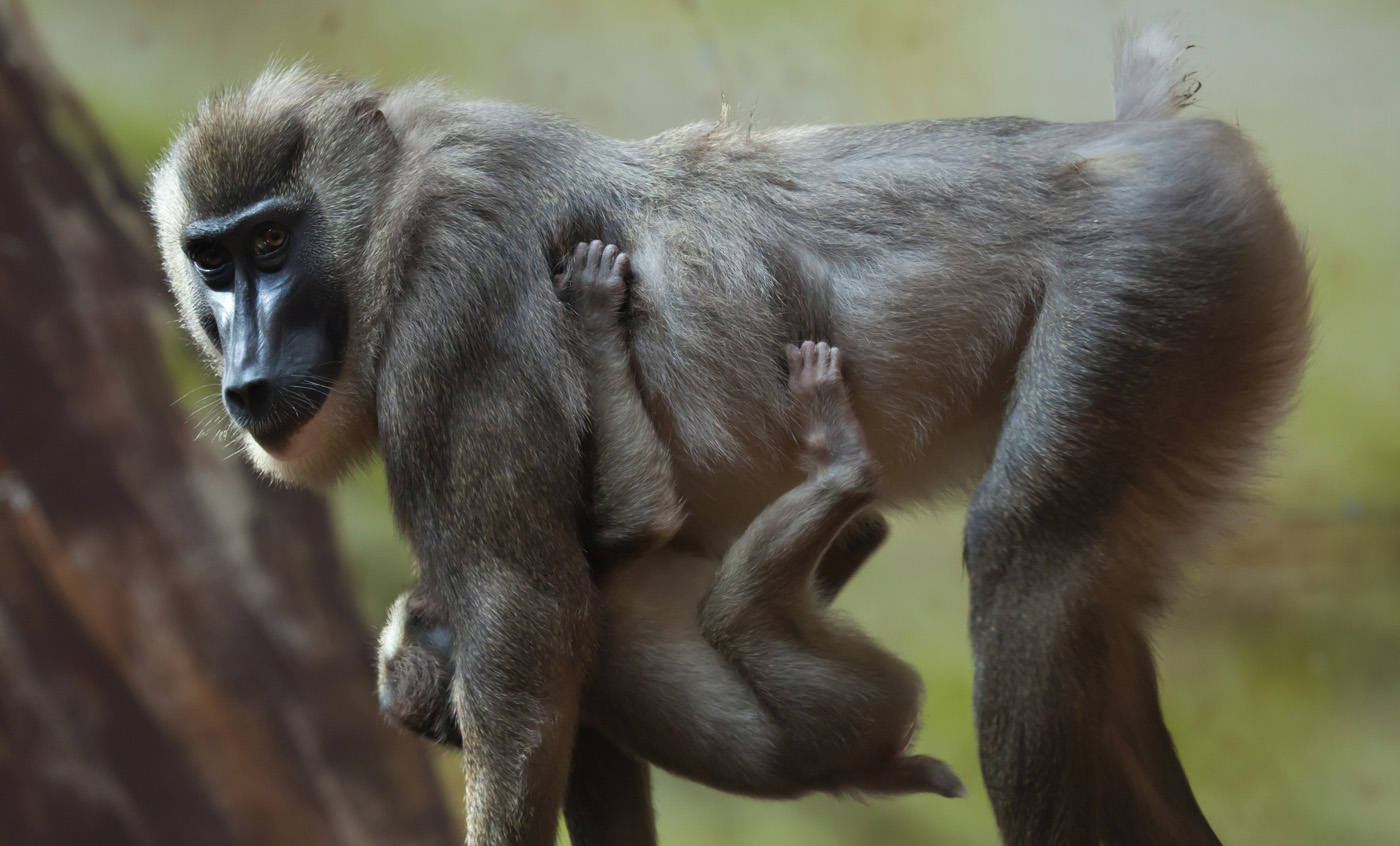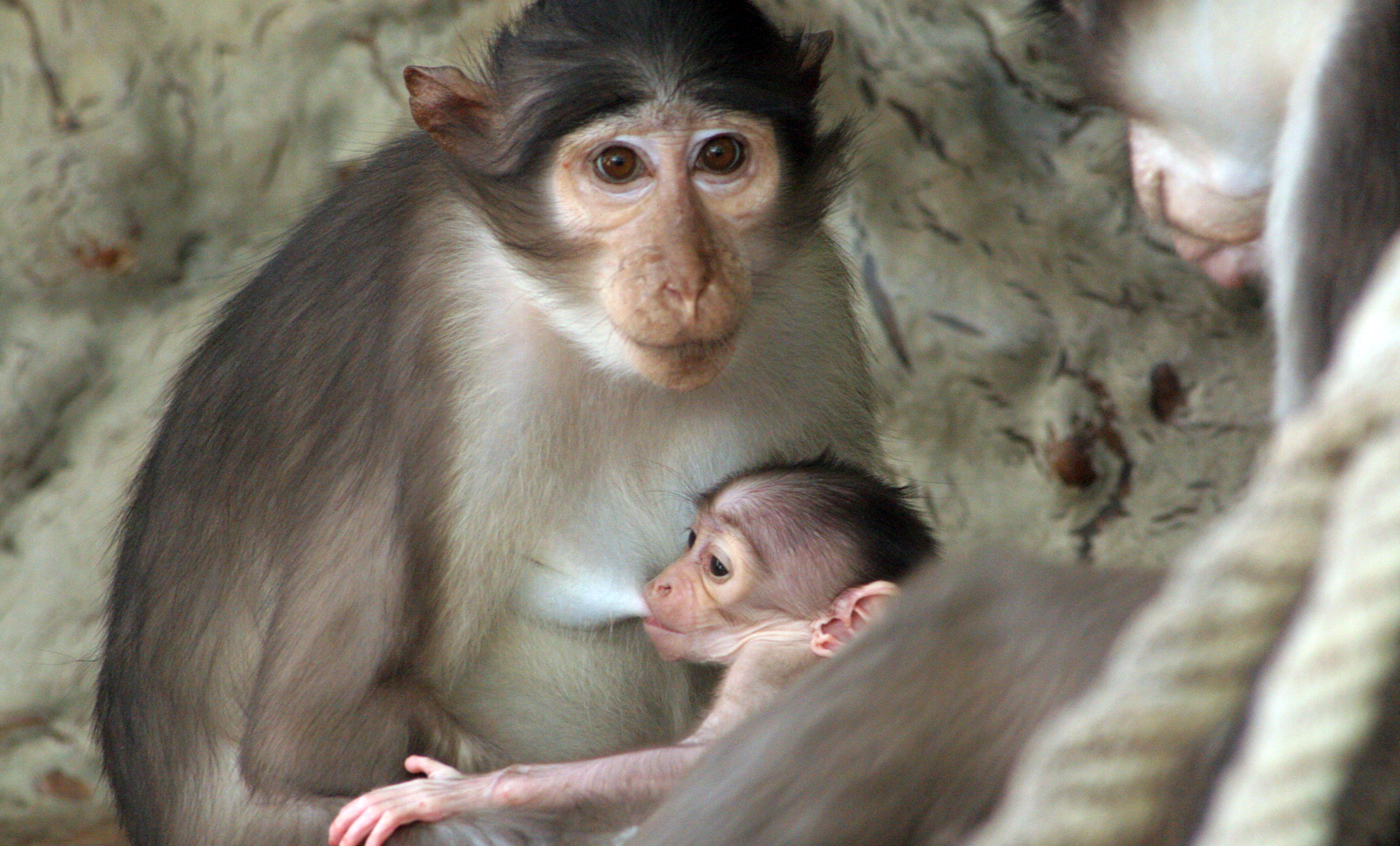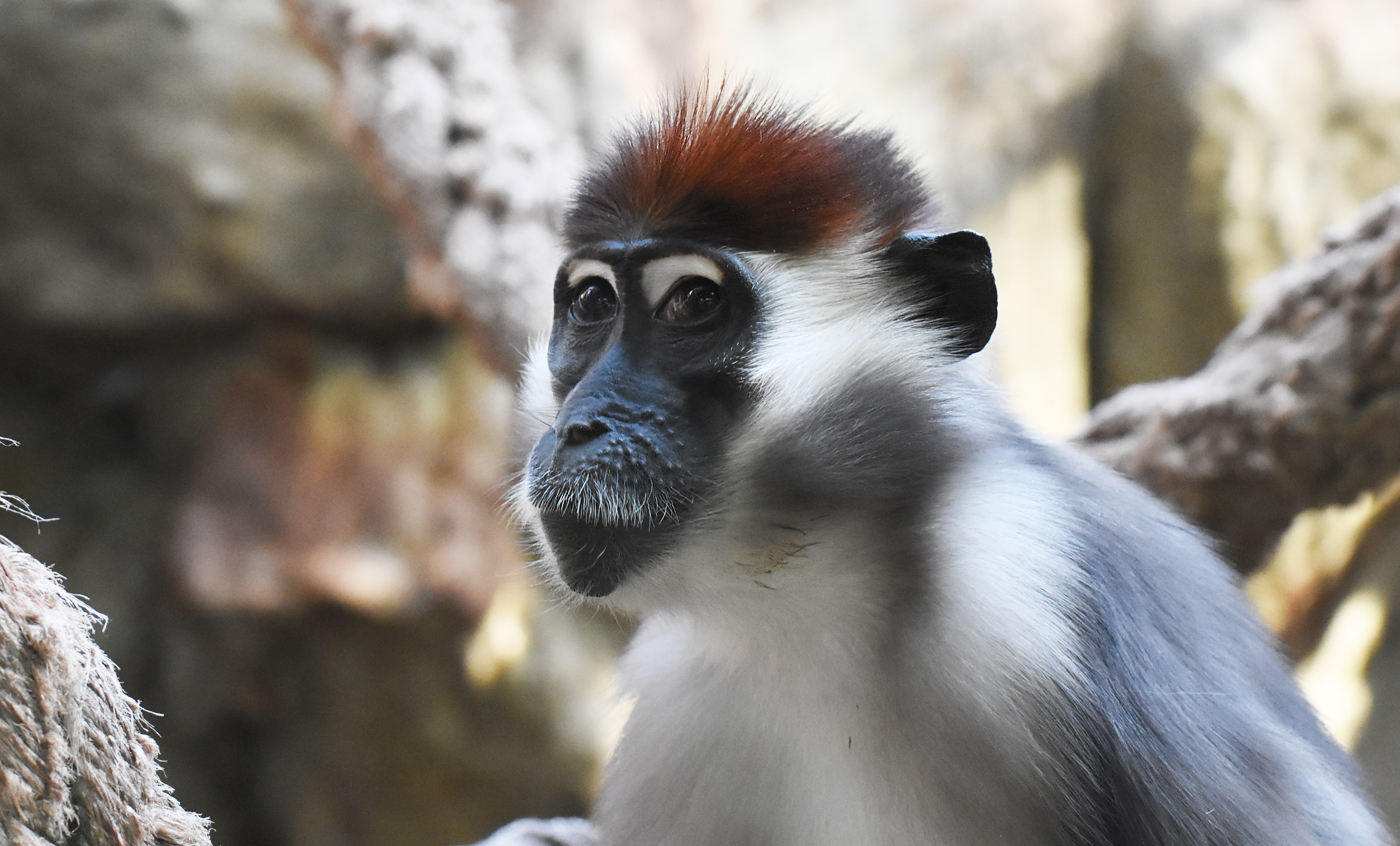Drill
The drill is a close relative of the mandrill, although far less known, due to its colouration not being as outstanding and, mainly, because of its extreme rarity, for very few individuals remain in the wild.
It is native to the wet rainforests of a small region in western tropical Africa, where it usually has a ground-dwelling behaviour. As in most primates, it is basically vegetarian, and complements its diet with insects and small vertebrates.
Breeding program
Natural habit
Nigeria, Cameroon and the Bioko Island (Equatorial Guinea).
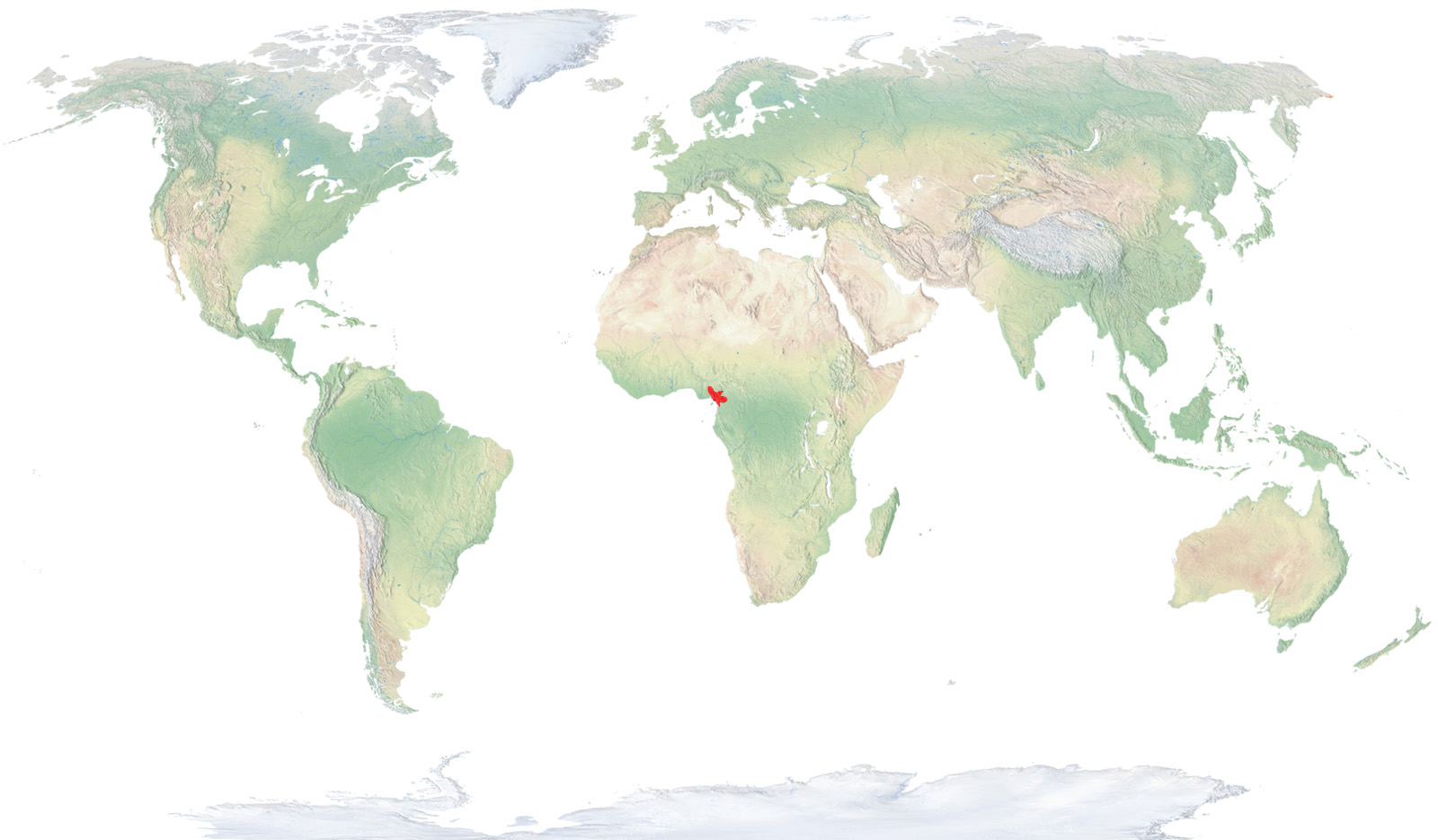
- Distribution / Resident
- Breeding
- Wintering
- Subspecies
Risk level
- Extint
- Extint in the wild
- Critically endangered
- In Danger
- Vulnerable
- Near threatened
- Minor concern
- Insufficient data
- Not evaluated
Taxonomy
Physical characteristics
Biology
Reproduction
Biology
Drills are hefty primates with olive-grey fur, a small face and a short tail of 7 or 8 cm. Its beard and area around the cheeks are white. It has high sexual dimorphism, as males are considerably larger and heavier than females, with very sharp bony protrusions and highly developed fangs.
Drills inhabit the primary wet and dense rainforest, either in coastal or mountain areas, as well as in mature secondary forests.
It is a basically vegetarian animal that eats fruit, roots, seeds or mushrooms, but it completes its diet with insects and small vertebrates.
Gestation lasts for about six months and each time a single calf is born, exceptionally two. During oestrus, females display an eye-catching perianal inflammation that makes males aware of their receptiveness.
Males are fertile since they are 6 years old and females since they are 3. The menstrual cycle of females spans 33 days, during which a perianal inflammation progressively grows bigger, until they become receptive. Gestation lasts for six months approximately, 179-183, according to Böer, 1985. Interbirth intervals are of 17-19 months. The reproductive cycle of females lasts for 20 years, during which time they can give birth to twelve infants (under the controlled environment conditions of a zoo). Infants breastfeed until they are 15 months old. At 8 months, the mask of their faces changes from white to black, and at 18 months they fully join the adult social hierarchy.
It is a very ground-dwelling species, which generally moves on the ground. It forms groups consisting of an adult male, several adult females with infants and some young ones at their puberty. Small groups can gather with others and form more numbered groups, during season with low food availability.
Their activity takes place during the day. They are semiterrestrial, mainly foraging on the ground, but climbing trees to eat and sleep.
The Zoo of Barcelona takes place in the EEP of this species and is one of the few in Europe to keep a reproductive group in captivity of this critically endangered species in the wild.




